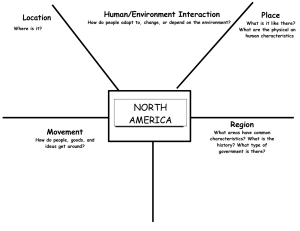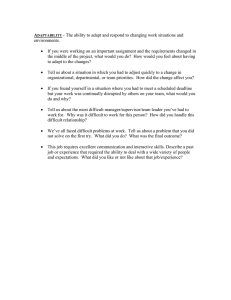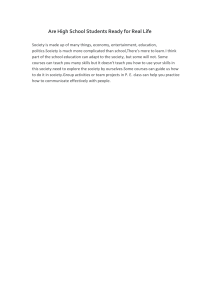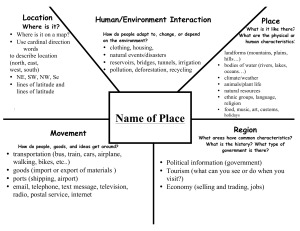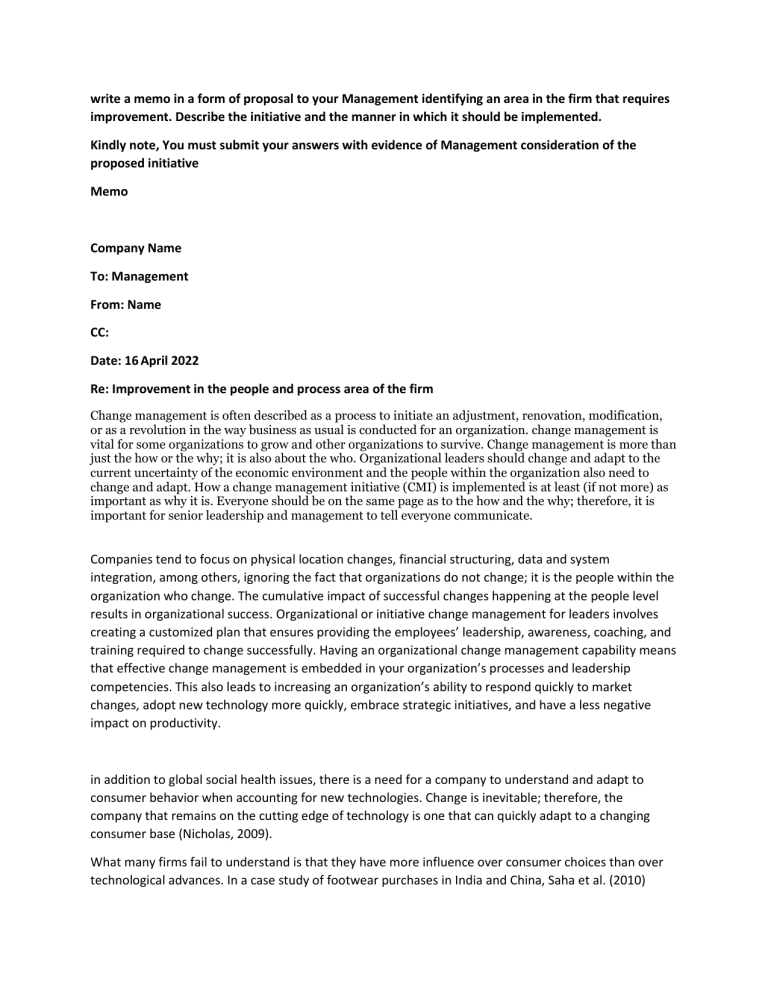
write a memo in a form of proposal to your Management identifying an area in the firm that requires improvement. Describe the initiative and the manner in which it should be implemented. Kindly note, You must submit your answers with evidence of Management consideration of the proposed initiative Memo Company Name To: Management From: Name CC: Date: 16 April 2022 Re: Improvement in the people and process area of the firm Change management is often described as a process to initiate an adjustment, renovation, modification, or as a revolution in the way business as usual is conducted for an organization. change management is vital for some organizations to grow and other organizations to survive. Change management is more than just the how or the why; it is also about the who. Organizational leaders should change and adapt to the current uncertainty of the economic environment and the people within the organization also need to change and adapt. How a change management initiative (CMI) is implemented is at least (if not more) as important as why it is. Everyone should be on the same page as to the how and the why; therefore, it is important for senior leadership and management to tell everyone communicate. Companies tend to focus on physical location changes, financial structuring, data and system integration, among others, ignoring the fact that organizations do not change; it is the people within the organization who change. The cumulative impact of successful changes happening at the people level results in organizational success. Organizational or initiative change management for leaders involves creating a customized plan that ensures providing the employees’ leadership, awareness, coaching, and training required to change successfully. Having an organizational change management capability means that effective change management is embedded in your organization’s processes and leadership competencies. This also leads to increasing an organization’s ability to respond quickly to market changes, adopt new technology more quickly, embrace strategic initiatives, and have a less negative impact on productivity. in addition to global social health issues, there is a need for a company to understand and adapt to consumer behavior when accounting for new technologies. Change is inevitable; therefore, the company that remains on the cutting edge of technology is one that can quickly adapt to a changing consumer base (Nicholas, 2009). What many firms fail to understand is that they have more influence over consumer choices than over technological advances. In a case study of footwear purchases in India and China, Saha et al. (2010) wrote that many factors affect the buying of shoes. Noting that price, quality, ambience of the store, and celebrity endorsements do influence what shoes customers buy, Saha et al. concluded that such factors are ultimately influenced and impacted by the consumers’ belief systems, regardless of the new product. Consumer behavior and product choices are influenced by personal attitudes, values, personality, emotions, moods, cultural upbringing, and the like. These factors drive buyer behavior and affect a company’s bottom line through profit. Therefore, a company can adapt to emerging technologies and innovate by influencing consumer choice, rather than adopting new capital expenditures. Investment in new technology can be dependent on the potential buying population. Consider this: new medical technologies have expanded exponentially, now that Baby Boomers are growing older (Nicholas, 2009). We are now seeing new drug therapies in treating diabetes, high blood pressure, and high cholesterol, all of which have high initial start-up costs but also have great return on investment (ROI) potential (Fonseca et al., 2012). Conversely, Baby Boomers buy fewer cell phones, iPads, and the like than younger age groups (Nicholas, 2009). Yet, a great deal of technological advancement is in these fields because Millennial, Gen X, and Gen Y consumers buy a lot of these types of products. The consumer base has made a dramatic shift in composition not only because consumers live longer, but because the generations now living have contrasting needs, wants, and demands based upon the different world events that have impacted their formative years (Badke-Schaub et al., 2010; Goldsmith, 2010). Nicholas (2009), in an article about the generational differences of workers and consumers, writes of the four generations currently living and their perceptions and responses to current advertising methods and trends. Traditionalists, born before 1946, are slow to embrace change, as compared to Baby Boomers, Generation X, and Generation Y, whose needs and responses range from meaningful work to freedom and autonomy needs Fusch, et al., 2020 and how these emotions must be considered by marketing departments (LeBoeuf & Simmons, 2010). Nicholas also addressed these four generations and their impact on marketing and consumer concerns, noting that large numbers of Baby Boomers skew market results, yet different values, such as traveling and electronic goods, can also skew market demands. Adaption requires developing new core competencies (Botha & Claassens, 2010). It requires change to the organization on a large scale, for “without a clear vision of desired outcomes and a good strategy to attain them, it is unlikely that an organization will be able to adapt successfully to a turbulent environment full of external threats” (Yukl & Lepsinger, 2004, p. 90). In order for an organization to effectively implement acognitive conflict scenario, the company must have a culture that encourages innovation and change, encourages flexibility, supports a continuous process, emphasizes the importance of learning, displays openness to new ideas and risk taking, envisions change, monitors the external environment, rewards and recognizes individuals, and encourages collective learning (Baer, 2012). Leadership behaviors to enhance a learning community include strategic planning, envisioning change, building support for change, implementing change, and encouraging innovative thinking (Baer, 2012). To sum up, the process is complicated and dense, but necessary to encourage brainstorming of ideas during a healthy debate and facilitate a learning environment. One may perceive disruption as a departure from the norm; however, many see disruption as the norm (Karn & Cowling, 2006). Indeed, contemporary technology is changing rapidly, subsequently morphing into new structures, products, and work-flow processes. Yet, the human dilemma remains the same: for meaningful work as well as reward and recognition in the workplace (Hanson & O’Donohue, 2010). Unless a company can adapt to new technology, they are soon out of business. In a case study of five manufacturing firms, Akdogan and Cingoz (2009) found that organizations respond to technological advances by attempting to reduce the company to an appropriate size through restructuring. They hope to become more flexible by cutting costs to remain competitive in the marketplace. Moreover, a company will put into place other strategies before shutting the doors, including layoffs, downsizing, early retirement plans, and selling the company to a rival competitor (Akdogan & Cingoz, 2009). In the end, the result is the same: the company must face the inevitable fact that it has failed to adapt to disruptive innovation and is no longer in business (Adner & Snow, 2010). At the time of a crisis, or afterward, we tend to focus on the negative aspects of a situation and miss the learning opportunity and the chance to adapt future behavior for further success, a chance to “transform our experiences into grist for our mill” (Bennis, 2009, p. 109). Too often management is addicted to the quick fix and an obsession with the bottom line. However, there no longer is a bottom line, for life “is no longer linear and sequential…. it is spontaneous, contrary, unexpected and ambiguous. Things do not happen according to plan, and they are not reducible to tidy models” (Bennis, 2009, p. 18). Instead, decision makers must be flexible, creative, and innovative to be able to embrace an emerging opportunity when faced with one (Prewitt et al., 2011). Good entrepreneurs are not always the savviest of innovators and can make poor decisions for their companies (Levangie, 2004). In Levangie’s eight simple practices of effective executives, the writer presents entrepreneurial decisions and dilemmas that have the most influence on decision making, good or bad, including competition, scarcity of resources, finances, calamities, and employee retention (Chalhoub, 2010; Levangie, 2 004). To counter and account for anticipated problems, therefore, the most effective executives follow, develop, and implement action plans to account for changes and challenges in the marketplace (Chalhoub, 2010; Levangie, 2004). The challenge then becomes how entrepreneurs can account for and attempt to mitigate poor decisions. Is it process or structure? Structural forms within the company that facilitate innovation include how the work is Fusch, et al., 2020 structured and the physical proximity of important team members that dramatically increase opportunities to discuss ideas and exchange information (Lee et al., 2011; Yukl & Lepsinger, 2004). Mitigating poor decisions is the implementation of cross-functional teams made up of members from relevant parts of the organization as well as outside stakeholders (Lee et al.; Zhang et al., 2011). Moreover, this mitigating process is enhanced by diversity of membership and allows rapid and creative response to a changing environment (Goffin & Koners, 2010; Goleman et al., 2010). Finally, the organization encourages innovative thinking by encouraging others to innovate, see multiple perspectives, set realistic goals for creativity, and recognize and reward those who do (Goleman et al., 2010).
